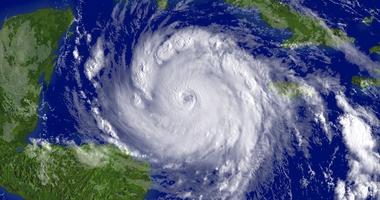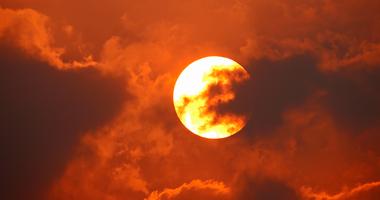
The Problem with Warming Winters
4 min read
On the surface, the idea of a mild winter doesn’t seem so bad, right?
Warmer temperatures mean more precipitation falling as rain rather than snow, which means less shoveling out your car.
They can mean less ice on roadways and power lines, fewer weather-related school delays, and even lower heating bills.
Not too shabby, huh?
Well, unfortunately, it’s not that simple.
In many instances, we need winter. Plant lifecycles depend on dormant periods. Snow needs to accumulate in many areas to feed water supplies come spring. Many animals rely on snow and ice. The list goes on and on.
But here we are, on the heels of the hottest ever summer, and it looks like many parts of the US are in for a warmer than average winter too.
According to NOAA, large swaths of the southeast and southwest, midwest, mid-Atlantic, and northeast are forecast to likely have a warmer than average December to February.

So, what does it mean for people and ecosystems the nation over that we’re anticipating yet another above average season? Let’s take a look.
Climate Change and Winter
The impacts of the climate crisis on winters across the United States are becoming increasingly evident. While the overall trend is towards warmer winters, the effects are complex and regionally variable.
One of the most noticeable changes in recent years is the increase in average winter temperatures.
Since the late 20th century, many parts of the US have experienced a significant rise in winter temperatures – indeed, on average, across the contiguous 48 states, temperatures have increased by about 3°F during the winter season versus what they were in the pre-industrial era.
Warmer winter weather also has implications for precipitation.
In some areas, particularly in the northern and eastern US, winters are becoming wetter. This is due to increased atmospheric moisture content, which can lead to heavier snow and rainfall and more frequent winter storms. However, in other regions, such as the US southwest, winters are becoming drier with less snowmelt runoff in the spring, contributing to increased drought conditions in the region.
The changing nature of winter precipitation also affects the type of precipitation that falls.
Warmer temperatures can lead to a shift from snow to rain, even in regions that are traditionally snowy like the US northeast and Rocky Mountain states. This can have significant consequences for various sectors, including agriculture and winter tourism (think skiing, snowboarding, etc.).
The warming climate also affects the timing and duration of winter seasons.
Spring is arriving earlier, leading to shorter winters and earlier snowmelt, a phenomenon sometimes known as “season creep.” This can disrupt ecosystems, as plants and animals that rely on specific seasonal cues may experience mismatches in their lifecycles.
Extreme Weather
Another notable impact of climate change on winters is the increased frequency and intensity of extreme weather events.
Winter storms, like blizzards and ice storms, can be more powerful and disruptive due to the increased energy available in the atmosphere due to broader overall warming. Additionally, the jet stream, a powerful air current that influences weather patterns around the world, is becoming more variable, leading to sudden shifts in temperature and precipitation.
This variability can result in quick transitions from mild to severe winter weather conditions. It's also important to note that these jet stream variations can even sometimes lead to more extreme cold events in some locations, even as the season itself sees more and more warming.
“Arctic warming and change is likely contributing to the increasing frequency of Arctic polar vortex stretching events that deliver extreme cold to the United States and Canada,” according to NOAA, “including one just prior to the winter 2021 Texas cold wave that caused the collapse of the state’s infrastructure and $80-130 billion in direct and indirect economic losses.”
Ecosystem Disruption
Warming winters are disrupting ecosystems in serious ways. As temperatures rise, the delicate balance of nature is thrown off kilter.
Plant and animal lifecycles rely on seasonal cues like temperature and day length. Thus, warmer winters can lead to earlier blooming from plants and egg-laying and migration in insects and animals.
Warming winters also have significant impacts on creature habitats. Species adapted to cold climates, think polar bears or boreal trees and plants, may lose their habitats as temperatures rise and ice and snow melt earlier and earlier.
Additionally, changes in snowmelt and precipitation patterns can impact water availability and quality, which can have a ripple effect on everything from agriculture to fresh water supplies relied upon by communities across the country.
“Climate change disrupts the critically important timing of events, such as snowmelt and spring bloom, upon which ecosystems and agricultural industries depend. For example, warmer winters can lead to early bud-burst or bloom of some perennial plants, resulting in frost damage when cold conditions occur in late spring,” Climate Nexus writes.
“All species do not respond to the change of seasonal cues in the same way. This can lead to mismatches between the availability of flowers and their pollinators or predators and their prey.”
Warmer winters also can increase the risk of disease outbreaks by helping pathogens spread to new areas that previously didn’t see them and remain active for longer periods of time.
With the warmer temperatures and changing rainfall patterns discussed above, the number of mosquitoes and ticks, which can spread diseases like Lyme disease and West Nile virus, are growing. Ticks, in particular, are becoming active earlier in the season and in more and more areas.
At the same time, as precipitation shifts, outbreaks of infectious and water-borne diseases like cholera and diarrhea are also on the rise in some places.
What You Can Do
Addressing the impacts of climate change on winters will require everything we’ve got.
Reducing the greenhouse gas emissions driving these changes to mitigate further warming. Check.
Adapting to the changes that are already occurring. Check.
And investing in resilient infrastructure and emergency preparedness. Check and check.
But we can do this – we have all of the tools we need to stop warming temperatures in their tracks and work toward a better, more sustainable future for all.
All we need is the political will to make these solutions a reality.
It’s time to stand up and let world leaders know: the time to transition away from the fossil fuels driving rising temperatures to clean energy technologies that can mitigate the risk is now.




